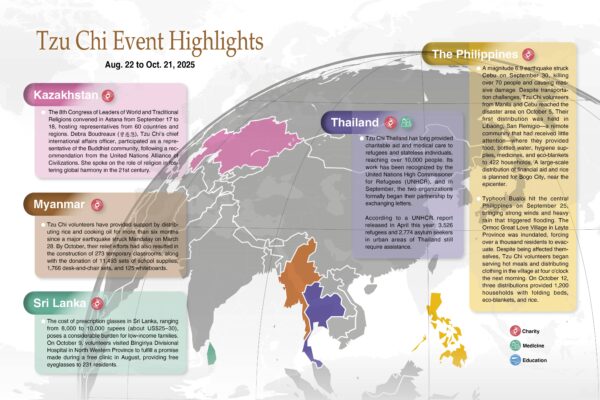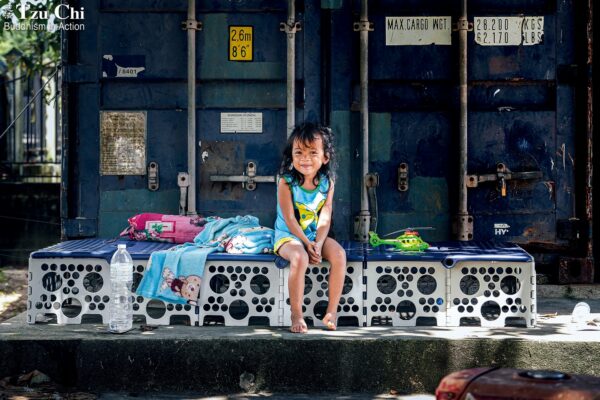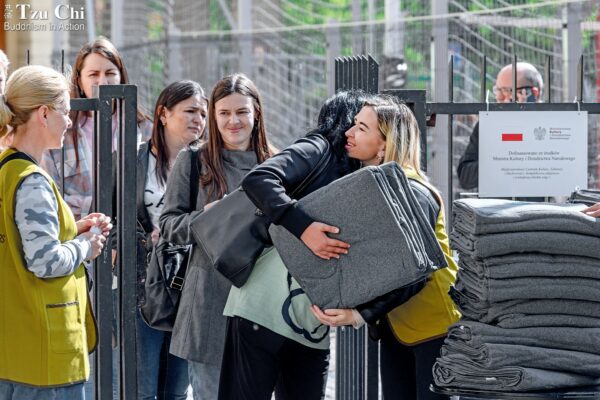Narrated by Dr. Yu Cheng-chan, vice superintendent of Taichung Tzu Chi Hospital
Compiled by Guo Su-xia and Wang Rui-lin
Abridged and translated by Wu Hsiao-ting
Painting by Wen Mu (Detail from Road)
A woman in her mid-70s, who had recovered from stage three stomach cancer after receiving treatment from me, returned to my clinic and unexpectedly broke down in tears.

A 75-year-old woman from Taiwan’s Atayal tribe came to my clinic at Taichung Tzu Chi Hospital with symptoms of abdominal pain, poor appetite, black stools, and significant weight loss—ten kilograms (22 pounds) over the past six months. A gastroscopy and biopsy confirmed stomach cancer, with the tumor in a difficult-to-reach area.
Given her age and the seriousness of her condition, both her family and our medical team hesitated to pursue aggressive treatment. However, we were committed to finding a solution. After discussing her options with her family, I decided to treat her with a combination of immunotherapy and chemotherapy to shrink the tumor, followed by minimally invasive surgery.
Her recovery was difficult. She experienced delirium after the surgery and temporarily lost recognition of those around her. She developed pleural effusion, or “water on the lungs,” and extended bed rest led to muscle atrophy in her legs, making them weak and unsteady. To make matters worse, her surgical wounds healed poorly.
Her physical challenges were worrisome enough, but her care was further complicated by the fact that her primary caregiver was a foreign worker who spoke a different language. Nurses had to rely on gestures or translation apps to communicate and help with her care. Thankfully, she was eventually discharged and allowed to return home to rest.
If we hadn’t intervened, she might have given up, believing nothing more could be done. But stepping in came with a lot of pressure. As her condition fluctuated, so did my emotions—like riding a roller coaster. Even during a medical training course in Singapore, I couldn’t stop worrying about her. Would she recover? Later, when I reviewed her pathology report, I was amazed—there were no cancer cells left, only ulcers and fibrotic granulation tissue. She had essentially been cured!
When she returned to my clinic, I expected gratitude and happiness. Instead, she broke down in tears. She explained that before her illness, she had enjoyed visiting friends and leading an active life in her village. But now, after surgery, her strength had greatly diminished. Her legs were so weak she couldn’t even leave her house. This made her deeply sad.
Her reaction caught me by surprise. Though she was cancer-free, her physical strength hadn’t returned. Living in a remote mountainous area in Miaoli County, northern Taiwan, she had no access to rehabilitation facilities. I decided to visit her in person to better understand her situation and offer a solution.
We quickly assembled a home visit team with experts in nursing, rehabilitation, nutrition, pharmacy, case management, and social work. Nine of us packed into a van and set off. The journey, which became more strenuous on the mountain roads, took over an hour and a half. Once there, we assessed her living conditions and watched her take a few steps. She was unsteady and at risk of falling. Our rehabilitation specialist advised her to use her sofa for support and taught her exercises to strengthen her legs at home, like standing, squatting, tiptoeing, and balancing on one leg.
A week into home rehabilitation exercises, she returned to the clinic and happily shared that her leg strength had significantly improved. The rehabilitation specialist provided her with a lightweight quad cane to replace her bamboo walking stick, which was expected to reduce her risk of falling. With her progress, I agreed that she only needed to return for monthly check-ups.
Though we stayed only half an hour in her home, the home visit required over three hours of travel round trip and the mobilization of a large team. Such trips aren’t always practical from a hospital cost perspective, but are invaluable for certain patients. They show the patient that their doctor genuinely cares, which boosts their confidence and encourages them to make more effort. Plus, by seeing their environment firsthand, we can better tailor treatment plans to prevent complications.
Advances in medical technology give hope, but attentive patient care makes treatment even more effective. It builds trust, provides emotional support, and reduces anxiety. The extra effort can truly make a difference.



